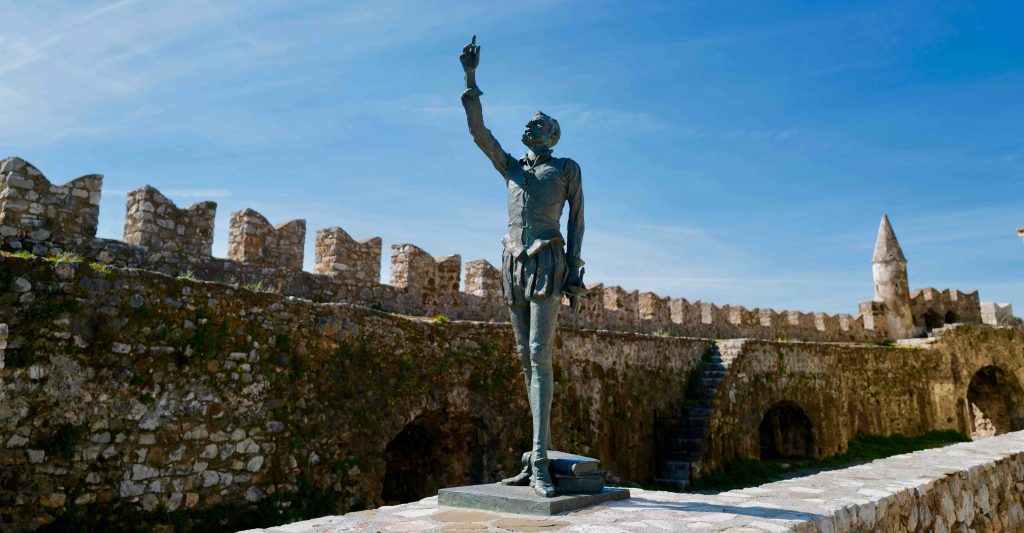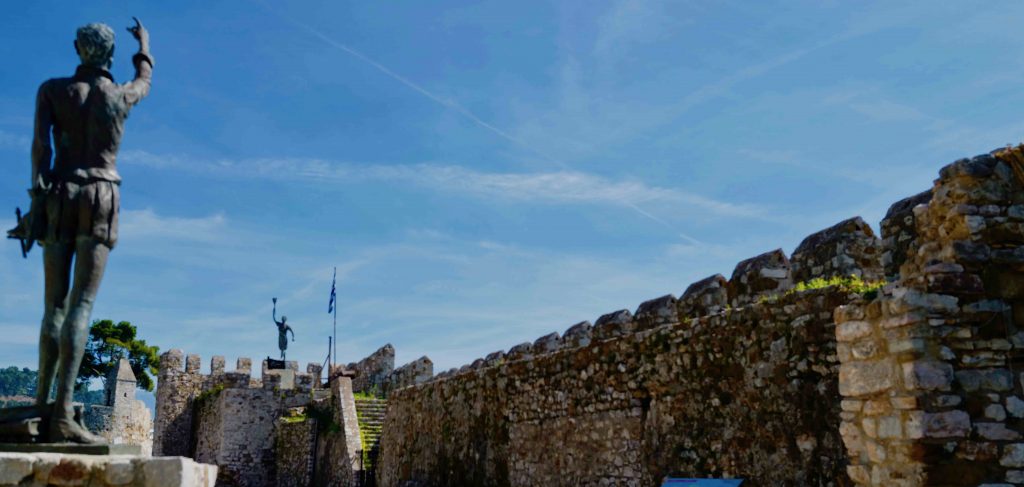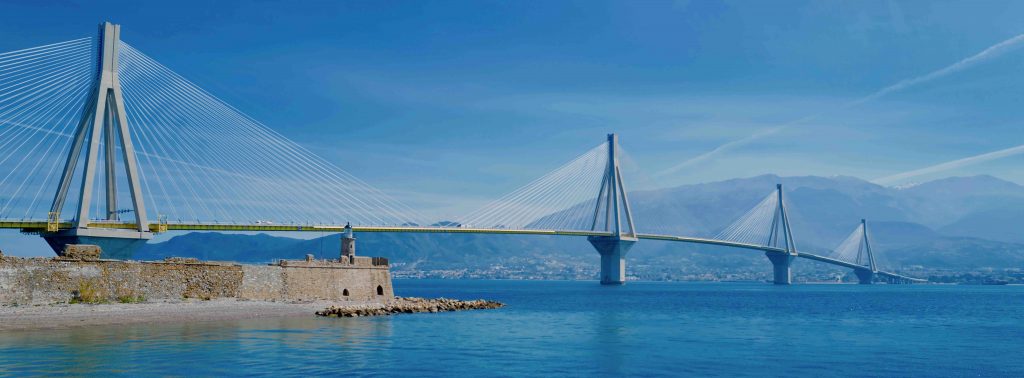Post 4 of 7



Not quite the last person I expected to bump into in Greece, but close to it, was Miguel de Cervantes, author of Don Quixote. But there he was standing inside the ramparts in Nafpaktos, in bronze effigy. Waving.
Then I recalled reading decades ago that he took part in the Battle of Lepanto, just offshore from Nafpaktos (formerly known as Lepanto) – receiving three gunshot wounds for his trouble.
He would later quip that, “The loss of my left arm is for the greater glory of my right.” The right arm that, in short, would write what is reputed to be the first novel in European fiction.
The Christian coalition that won the Battle of Lepanto had been promoted by Pope Pius V to rescue the Venetian colony of Famagusta on Cyprus, where I spent happy years in the 1950s. This was after Nicosia and other Venetian possessions in Cyprus had fallen to the Ottomans in 1570.
As Wikipedia notes: “The Venetians had surrendered after being reassured that they could leave Cyprus freely. However, the Ottoman commander, Lala Kara Mustafa Pasha, who had lost some 50,000 men in the siege, broke his word, imprisoning the Venetians.”
Then, as I remember being horrified to learn while at school in the 1960s, Marco Antonio Bragadin was flayed alive and his corpse hung on Mustafa’s galley, together with the heads of three other Venetian commanders.
So you could safely say Lepanto was something of a grudge match. And that other statue that the statue of Cervantes appears to be waving at in Nafpaktos is of Giorgos Anemogiannis, who also came to a sticky end at the hands of the Ottomans.

Leave a Reply